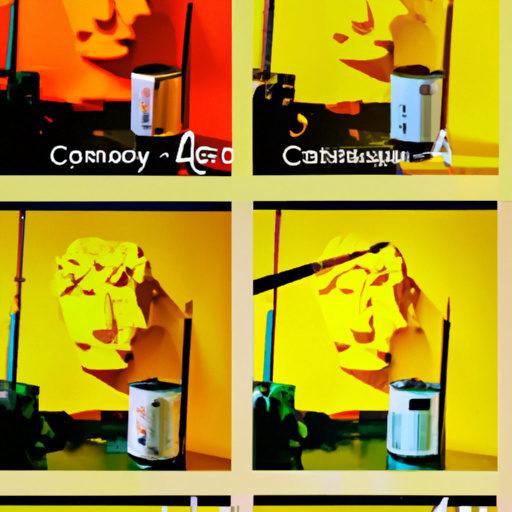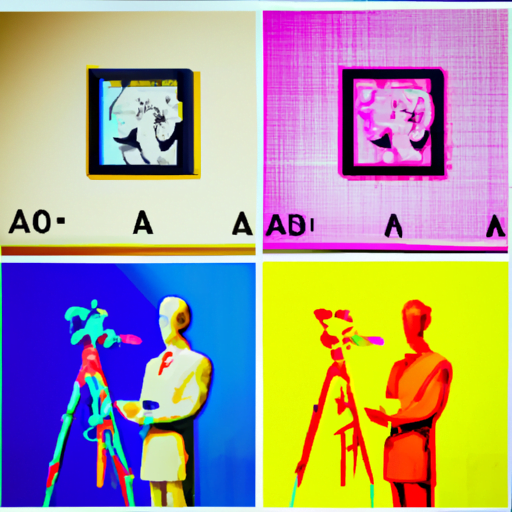
-
Table of Contents
The Challenge of Originality: Addressing Concerns in AI Art

Artificial Intelligence (AI) has revolutionized various industries, and the art world is no exception. AI-generated art has gained significant attention in recent years, with creations ranging from paintings and sculptures to music and poetry. While AI art offers exciting possibilities, it also raises concerns about originality and the role of human creativity. This article explores the challenges of originality in AI art and discusses potential solutions to address these concerns.
The Rise of AI Art
AI art refers to artworks created or significantly influenced by artificial intelligence algorithms. These algorithms can analyze vast amounts of data, learn patterns, and generate new artistic outputs based on the learned information. The rise of AI art can be attributed to advancements in machine learning, deep learning, and generative adversarial networks (GANs).
One notable example of AI art is “Portrait of Edmond de Belamy,” created by the French art collective Obvious. The artwork, generated using a GAN, was sold at an auction for $432,500 in 2018. This event sparked a global conversation about the role of AI in the art world and its impact on traditional notions of creativity and originality.
The Challenge of Originality
Originality has long been a fundamental aspect of art. It is the ability to create something new, unique, and distinct from existing works. However, when AI algorithms generate art, questions arise about the authenticity and originality of the creations. Can AI truly be original, or is it merely replicating existing styles and techniques?
One argument against the originality of AI art is that it lacks the human experience and emotions that often drive artistic expression. AI algorithms are trained on existing artworks, which means they learn from the past rather than experiencing the present. As a result, AI-generated art may be seen as derivative or imitative, lacking the depth and personal touch associated with human creativity.
Another concern is the role of the artist in AI-generated art. Traditional art forms often involve a close connection between the artist and the artwork, with the artist’s intentions and emotions embedded in the creation. In AI art, the artist becomes the programmer or curator, shaping the algorithms and selecting the outputs. This shift in the artist’s role raises questions about authorship and the extent to which AI-generated art can be attributed to a human creator.
Addressing Concerns in AI Art
While concerns about originality in AI art are valid, there are several ways to address these challenges and ensure the continued relevance and value of human creativity:
1. Embrace Collaboration
Instead of viewing AI as a threat to human creativity, artists can embrace collaboration with AI algorithms. By working alongside AI systems, artists can leverage the computational power and pattern recognition capabilities of AI to enhance their creative process. This collaboration can lead to new artistic possibilities and push the boundaries of traditional art forms.
2. Encourage Hybrid Approaches
Hybrid approaches that combine AI-generated elements with human interventions can help bridge the gap between AI and human creativity. Artists can use AI algorithms as a starting point or a source of inspiration, adding their unique perspectives and emotions to the generated outputs. This approach allows for a blend of AI’s computational abilities and human creativity, resulting in truly original artworks.
3. Focus on Conceptualization and Interpretation
While AI algorithms excel at generating visual or auditory outputs, they often lack the ability to conceptualize or interpret meaning. Artists can leverage this limitation by focusing on the conceptualization and interpretation aspects of their work. By infusing their creations with personal narratives, symbolism, or social commentary, artists can add layers of meaning that go beyond the technical capabilities of AI algorithms.
4. Educate and Engage the Audience
As AI art becomes more prevalent, it is crucial to educate and engage the audience about the creative process and the role of AI. By providing insights into how AI algorithms work and the collaborative nature of AI art, artists can foster a deeper appreciation for the unique contributions of both humans and machines. This understanding can help dispel concerns about originality and encourage a more inclusive and diverse art ecosystem.
Conclusion
The rise of AI art presents both opportunities and challenges for the art world. While concerns about originality are valid, they can be addressed through collaboration, hybrid approaches, focusing on conceptualization and interpretation, and educating the audience. By embracing AI as a tool and partner in the creative process, artists can push the boundaries of traditional art forms and create truly original and thought-provoking artworks. The future of AI art lies in the harmonious coexistence of human creativity and machine intelligence.
